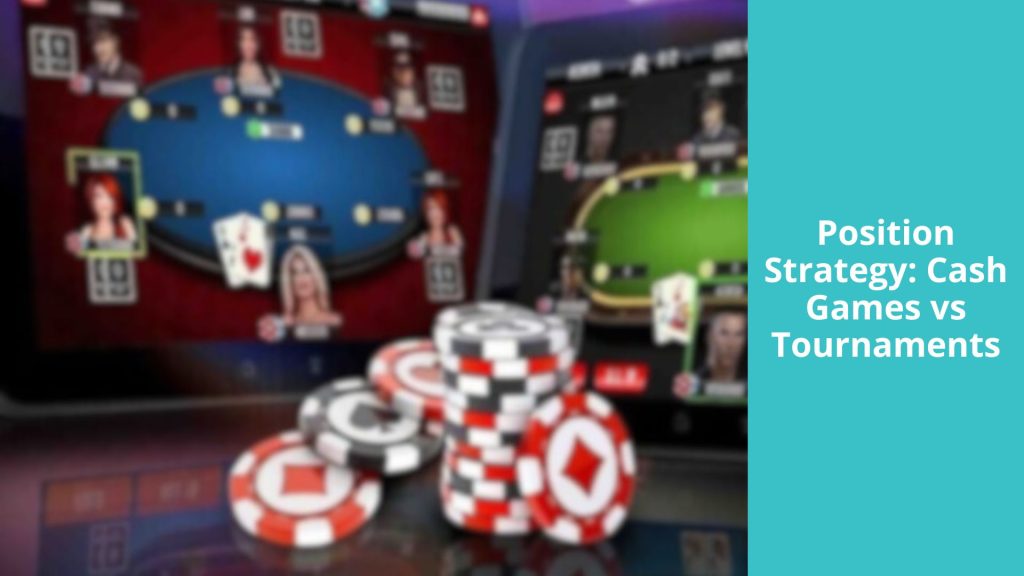Unlocking Poker Excellence – Mastering Positional Dynamics for Maximum Edge

Poker is a complex game of probabilities, mind games, and luck. As you progress, you realize one vital skill towers strategically above the rest – properly leveraging table positions. Where you sit radically alters profitable play. Early seats like blinds mean tight, data-poor choices. Late position near the coveted button permits loose, aggressive tactics utilizing information advantages. Across hand ranges, bet sizes, and bluff rates, position impacts everything.
This article explores why positioning is integral, how to adjust strategies seat-to-seat, and tips for advancing your poker journey through mastering table dynamics. If you seek to truly excel at poker over the long run, positional awareness is mandatory. So read on to elevate your game dramatically!
Understanding How Table Positions Influence Poker Strategy
As you progress in poker, you’ll realize position is a major factor influencing strategic decisions. Where you sit relative to the dealer button and blinds has concrete impacts on your chances to win. Generally, the later your position in the order of play, the better.
This table shows how position affects aspects of strategy like playable hand ranges, bet sizing, and bluffing opportunities:
| Position | Playable Hands | Bet Sizing | Bluffing Potential |
| Early (UTG, Blinds) | Very Tight (<10% hands) | Smaller | Low |
| Middle (MP, CO) | Moderate (15-25% hands) | Moderate | Moderate |
| Late (Button) | Very Loose (40%+ hands) | Large | High |
Playing Hands From The Hijack Seat
The hijack seat confers significant positional advantage in poker while bringing risk. You must balance speculative holdings with sound strategy. Some key hijack tactics:
- Open raise very wide when folded to, playing around 30% of hands
- Float boards with backdoor draws when facing aggression
- Consider proactive squeezes with hands like suited connectors
- Don’t slowplay big hands too much since button is yet to act
Using the Cutoff Seat Effectively
The cutoff confers nearly as much position advantage as the button. You must leverage the increased information from seeing most players act while retaining position on the blinds and button. Some key cutoff tactics:
- Open raise wide when folded to, playing around 40% of hands
- Bet large for value and as continuation bets to build pots
- Check/raise draws and weaker hands that flop well
- Protect strong hands with re-raises as blockers from button
Using Late Position for Profitable Play
Sitting in the cutoff or on the button puts you in poker’s most profitable seats. Getting to act after observing most of the table grants invaluable insight into optimal moves. You can leverage information advantages from late position in several ways:
| Position | Playable Hands | Bet Sizing | Bluffing Potential |
| Early | Very Tight | Smaller | Lower |
| Middle | Moderate | Moderate | Moderate |
| Late | Very Loose | Larger | Higher |
Enter more pots by acting last preflop. Build bigger pots quickly with premium holdings for maximum profits. And don’t hesitate to bluff when checked to on later streets.
Read also about Online Poker Ghosting.
Understanding the Hijack and Cutoff’s Advantages
The hijack and cutoff seats may not be as obviously strong as the button, but they still confer significant positional edge. You get to act after observing most of the table while staying ahead of the blinds and button. Some strategic notes:
- Loosen up preflop in both seats, playing around 25% of hands
- Isolate limpers and steal more pots when possible
- Protect equity in speculative hands by re-raising behind
- Consider proactive squeezes like light 3bets to take control
Contrasting In Position and Out of Position Play
Sitting in position can be critical to your victory because it gives you the most information. With information comes control. But is it really that simple? Of course not. Let’s break down all the influences of position at our table:
| Factor | Out of Position | In Position |
| Hand Ranges | Much Tighter | Very Wide |
| Bet Sizing | Smaller | Larger |
| Bluffs | Less Frequent | More Frequent |
| Draw Play | Passive | Aggressive |
Managing Bet Sizes Out of Position
When playing out of position, betting incorrectly can bloat pots and lead to tricky decisions on later streets. Some guidelines:
- Keep preflop raises small, 2-3BB. Not deep enough to play big pots IP
- Bet smaller as continuation bets, around 1/2 pot. Harder to barrel off
- Check/call most medium strength hands to keep pot small
This can lead to disaster by overplaying hands in bloated pots. Keep bet sizing conservative to avoid tough decisions for your whole stack against hidden information. It limits profit but reduces major mistakes.
Maximizing Value By Playing In Position
Having position in poker lets you leverage information and control pot size more easily. Some key strategies:
- Bet large for value on all streets, targeting 2/3 to full pot bets
- Barrel aggressively with strong holdings to build pots
- Check/raise draws and vulnerable made hands frequently
- Leverage fold equity by triple barrel bluffing with some frequency
Position Strategy: Cash Games vs Tournaments

Whether you’re playing cash games or tournaments, position remains vital. But specific adjustments are needed to account for inherent format differences.
This table summarizes key strategic differences:
| Factor | Cash Games | Tournaments |
| Hand Ranges | Wider from late position | More premium focused overall |
| Bluffs | More frequent | Less frequent as effective stacks decline |
| Bet Sizing | Larger from IP, smaller OOP | Declines relative to effective stacks |
| Draw Play | Aggressive to realize equity | Conservative as stacks shallow |
Cash games permit looser ranges and aggressive draw play leveraging max buyin depth. Declining effective stacks in tournaments mean tighter play, smaller bets, and avoiding bloated pots with speculative hands.
So while position remains critical in both formats, your strategy should adapt based on game format dynamics.
Adapting to Changing Positions in Tournaments
Unlike cash games, tournament poker positions change as players bust. You must adjust strategies for evolving dynamics:
- Value bet aggressively as effective stacks shrink
- Reduce bluffing frequency as stacks decline
- Play lower card premiums like AJ as M values rise
- Loosen steal ranges from LP as tourney progresses
- Consider ICM more with final table nearby
Don’t keep playing early tournament strategies as seats open up. Tightening play as bubble approaches is a fatal mistake. Be aware that effective stacks alter hand values. What plays as a standard open early becomes a shove late.
Mastering Positions for Poker Success
As we’ve seen, being cognizant of table positions is mandatory for poker excellence. Early seats require straightforward, premium hand play. Late position permits wider holdings, aggressive leveraging of equity, and higher bluff rates.
While initially overwhelming, persistently think about how position impacts every strategic decision. Play ABC poker from tough spots like blinds. Capitalize on information edges when you have them. Over time, positioning instincts become second nature.
Keep studying positional dynamics. Few skills influence win rates as substantially. Only by mastering table positions can you achieve long term poker prosperity.